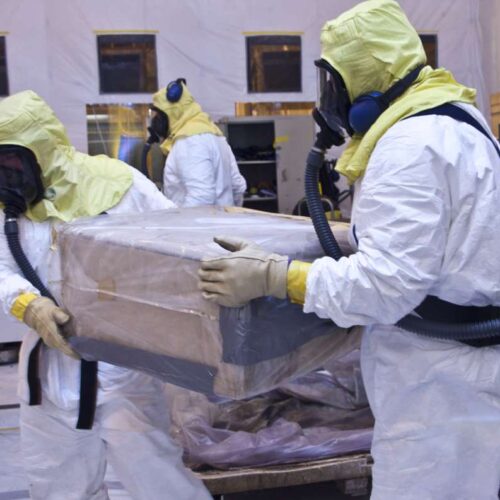Introduction
Department of Energy Inspector General Gregory H. Friedman has told Congress that the agency should launch a program patterned on the military’s BRAC base closure program to streamline, downsize or shut some of the Energy agency’s 16 national laboratories.
The agency’s chief internal watchdog is pushing to overhaul some of its nuclear and energy research labs and programs, saying that it is “highly questionable” whether a business-as-usual approach can continue in a time of budget cuts.
In an appearance before the House Science Committee’s subcommittee on oversight March 14, Friedman also called on the DOE to focus its sponsored research programs on those that could yield maximum short-term benefits. And he said the agency should concentrate its $6 billion annual environmental cleanup program on a few high-risk, high-priority sites rather than spread the effort out over dozens of sites in multiple states.
“The operative question going forward from our perspective may well be, what can the department afford in this environment?” Friedman asked the oversight committee.
Friedman did not make any specific recommendations on closures.
The veteran Energy agency auditor first proposed the reforms two years ago but pressed for them again in testimony before the House subcommittee this month as it considered the impact of federal spending cuts, known as the “sequester” will have on federal science and technology spending.
So far, he said, there is no sign of support for his proposals within Congress or the Energy department, which auditors say has struggled to manage its tens of thousands of contract workers and a host of multi-billion dollar construction projects.
“Our recommendation has not been adopted, and I must say that there are a number of members of Congress who have said it was dead on arrival,” Friedman told the House Science subcommittee, in response to a question on consolidation of national laboratories.
“We’ve made the recommendation because we thought it was the right thing to do and the time has come for a re-evaluation, but it has not (been) received with a great deal of acceptance.”
Then, referring to the recent election of a new Pope, Friedman added: “No white smoke, you might say.”
The proposal drew little comment from the Oversight subcommittee, chaired by Rep. Paul Broun, R-Ga., who directed much of his criticism toward allegations of mismanagement in the agency’s clean energy programs — including a $150 million loan to a Holland, Mich. company that was supposed to produce batteries for electric vehicles, but wound up with a 650,000-square-foot plant and no buyer for its product.
DOE spokesman Robert Middaugh said the agency had no comment on Friedman’s reorganization plan.
In pushing for reform, Friedman stepped beyond the traditional role of inspectors general, who typically focus on the performance of specific programs rather than recommending policy.
He spent 16 years with the DOE’s Inspector General’s office before becoming inspector general himself in 1998. He said the Energy department’s management of its nuclear and energy research programs has changed little since the Manhattan Project of the 1940s, when several labs now run by the agency worked together to produce the first atomic bomb.
Friedman’s most politically sensitive proposal may be that DOE set up a panel like the Department of Defense’s non-partisan, independent Base Closure and Realignment Commission — called BRAC — to study the DOE’s network of national laboratories.
The 16 labs include, among others, the nation’s nuclear weapons centers at Los Alamos National Laboratory, Lawrence Livermore and Sandia. For political leaders, national laboratories are treasured sources of high-skill, highly-paid jobs.
About $3.5 billion of the DOE’s roughly $10 billion annual budget for its national laboratories goes to administrative overhead, Friedman said. “In our view, the proportion of scarce science resources diverted to administrative, overhead, and indirect costs for each laboratory may be unsustainable in the current budget environment,” he said.
Friedman said that the DOE could save money by eliminating some administrative offices at the agency’s semi-autonomous National Nuclear Security Administration, which manages the nation’s nuclear weapons, naval reactor and nonproliferation programs.
The Energy agency overall spends nearly 90 percent of its nearly $30 billion annual budget on contracts — making it the largest civilian contracting agency in the federal government.
Michael Lubell, a physicist at the City University of New York and spokesman for the American Physical Society, said that the DOE might find ways to save money by consolidating some administrative jobs at national laboratories with similar research programs or those located close to one another.
But simply closing a lab could mean the loss of irreplaceable human capital and infrastructure, he said. In particular, he said, asking highly trained, experienced scientists to relocate would most likely lead to their exodus.
“The fact of the matter is you can move people from one base to another if they’re in the military,” he says. “Scientists are not that way.”
Read more in National Security
National Security
Obama proposes shifting funds from nuclear nonproliferation to nuclear weapons
Hundreds of millions of dollars proposed in spending on warheads
National Security
The high cost of rattling North Korea’s cage
B-2 flights send expensive message


Join the conversation
Show Comments